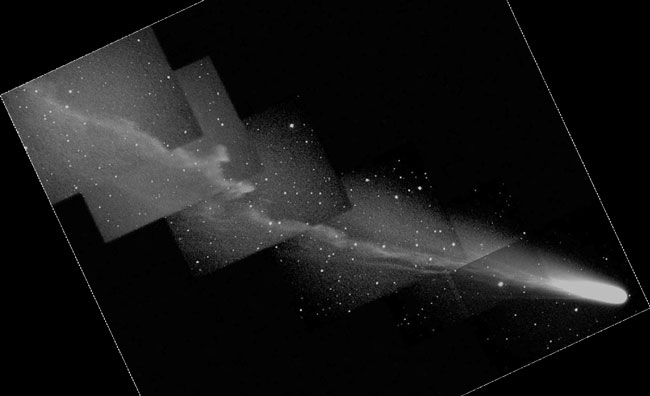
|
Credit & Copyright: Gilbert Jones
Explanation:
One of the brightest comets of the past five years
will likely reach its peak brightness this week.
Comet Ikeya-Zhang, officially known as C/2002 C1,
can now be seen without aide from a dark location
above the western horizon shortly after sunset.
Recent
luminosity estimates for
Comet Ikeya-Zhang place it between magnitudes three and four, making it brighter
than most commonly visible stars.
The above picture was taken on March 11 near Tucson,
Arizona,
USA.
The image caught
Comet Ikeya-Zhang showing a quite detailed
ion tail, possibly
disrupted by the
magnetic field of the
Sun's
outwardly flowing
particle wind.
As the activity of comets is notoriously hard to predict,
Comet Ikeya-Zhang may still hold some surprises as it
rounds the Sun this month and starts back out of the
Solar System in April.
|
January February March April May June July August September October November December |
| ||||||||||||||||||||||||||||||||||||||||||||||||
NASA Web Site Statements, Warnings, and Disclaimers
NASA Official: Jay Norris. Specific rights apply.
A service of: LHEA at NASA / GSFC
& Michigan Tech. U.
Based on Astronomy Picture
Of the Day
Publications with keywords: comet Ikeya-Zhang - tail
Publications with words: comet Ikeya-Zhang - tail
See also:
